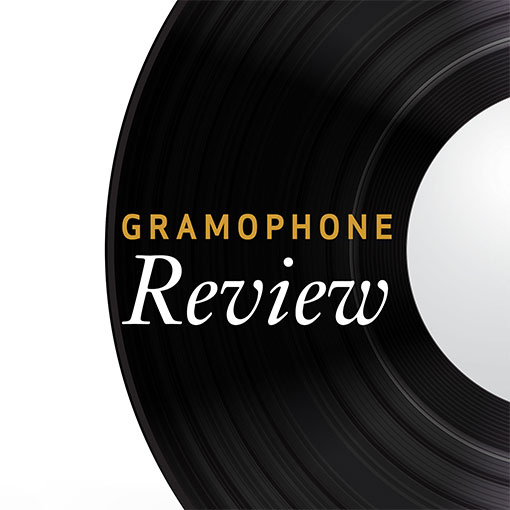Beethoven Piano Sonatas
View record and artist detailsRecord and Artist Details
Composer or Director: Ludwig van Beethoven
Label: Masterworks
Magazine Review Date: 2/1988
Media Format: CD or Download
Media Runtime: 62
Mastering:
DDD
Catalogue Number: MK42319

Tracks:
| Composition | Artist Credit |
|---|---|
| Sonata for Piano No. 17, 'Tempest' |
Ludwig van Beethoven, Composer
Ludwig van Beethoven, Composer Murray Perahia, Piano |
| Sonata for Piano No. 18, 'Hunt' |
Ludwig van Beethoven, Composer
Ludwig van Beethoven, Composer Murray Perahia, Piano |
| Sonata for Piano No. 26, 'Les adieux' |
Ludwig van Beethoven, Composer
Ludwig van Beethoven, Composer Murray Perahia, Piano |
Author: Stephen Plaistow
All these sonatas were recorded in New York but Les adieux was done in 1984, two years before the other two, and in a different studio. The sound is strikingly different: much more open, perhaps a little too reverberant and the impression conveyed is of Perahia playing on-stage in a hall as opposed to in a studio. The acoustic colours the sound in a way I like and gives it not only more character but a wider range of dynamics than I hear elsewhere on this CD. The playing throughout is very fine, but in the two sonatas from Op. 31 an atmosphere of 'studio conditions' seems to me to have taken something away from the richness behind the notes, or prevented Perahia from communicating it. For a start, you never hear him playing really quietly.
What the studio acoustic adds, if it adds anything at all, is akin to strong daylight, with the sun directly overhead. Such illumination is all very well but it doesn't do much for the sustained, interior quality of the slow movement of the D minor Sonata—where Brendel on Philips (only available as part of his complete sonata series on 6768 004, 11/78, ( 412 575-2PH11, 1/85) strikes me as less fussy and a good deal more eloquent—nor for the extraordinary finale of this work, which should surely admit of some shadows or half-lights. Again, Brendel, caring less for elegance and an analytical clarity of sound, makes more of it. What Perahia does is never without interest but it does sometimes seem a little small. I enjoyed him more in the other Sonata from Op. 31, the E flat, and liked in particular the whiff of excitement he brings to the finale. And it is not often one hears the first movement done with such grace, as if Beethoven was acknowledging in his inspiration what he owed to Haydn's example and in particular to the capricious side of Haydn's genius.
But I enjoyed Perahia most of all in the other E flat Sonata,Les adieux. Here, I think, we have one of the most complete realizations of this work that has appeared on record in recent years. It is beautifully coloured and the urgency of expression in the quick movements is at once vivacious in effect (not to say electrifying) and perfectly controlled. The basic idea of departure and return, manifest in the thematic imagery as well as in Beethoven's handling of movement and the passing of musical time, is strongly projected—in the central andante espressivo too, with its symbolic representation of waiting. And if one has missed quiet playing in the Op. 31 Sonatas, there is plenty here: in this slow movement, but also most tellingly, in parts of the first allegro, at the start of the development and in the coda. The coda, indeed, is treated more reflectively and much more imaginatively than usual. There is no resisting Perahia in Beethoven when he plays like this.'
What the studio acoustic adds, if it adds anything at all, is akin to strong daylight, with the sun directly overhead. Such illumination is all very well but it doesn't do much for the sustained, interior quality of the slow movement of the D minor Sonata—where Brendel on Philips (only available as part of his complete sonata series on 6768 004, 11/78, ( 412 575-2PH11, 1/85) strikes me as less fussy and a good deal more eloquent—nor for the extraordinary finale of this work, which should surely admit of some shadows or half-lights. Again, Brendel, caring less for elegance and an analytical clarity of sound, makes more of it. What Perahia does is never without interest but it does sometimes seem a little small. I enjoyed him more in the other Sonata from Op. 31, the E flat, and liked in particular the whiff of excitement he brings to the finale. And it is not often one hears the first movement done with such grace, as if Beethoven was acknowledging in his inspiration what he owed to Haydn's example and in particular to the capricious side of Haydn's genius.
But I enjoyed Perahia most of all in the other E flat Sonata,
Discover the world's largest classical music catalogue with Presto Music.

Gramophone Digital Club
- Digital Edition
- Digital Archive
- Reviews Database
- Full website access
From £8.75 / month
Subscribe
Gramophone Full Club
- Print Edition
- Digital Edition
- Digital Archive
- Reviews Database
- Full website access
From £11.00 / month
Subscribe
If you are a library, university or other organisation that would be interested in an institutional subscription to Gramophone please click here for further information.





